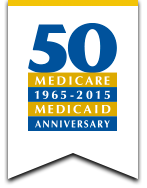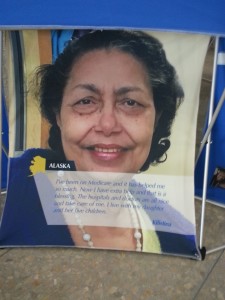When I was younger, I didn’t often think about Medicare or Medicaid. Before the “Young Invincibles” were told we were young and invincible, Generation Xers like me were more often than not just people running around who may or may not have had health care. I was fortunate enough to spend my 20s in relatively good health and with means enough to have the health coverage I needed. As the nation celebrates the 50th anniversary of the creation of Medicare and Medicaid this week, I find myself thinking about these programs not only as a professional imperative to the work I do on aging policy, but as someone in his 40s with aging parents and an increasing awareness about the need for these important programs based on personal experience.
 This week, events around the country marked the 50th anniversary of President Lyndon B. Johnson signing legislation that created these two critical safety net programs that ensure that millions of elderly, low-income, and disabled people have access to health care. In Washington, DC, the Hubert Humphrey building and the Centers for Medicare and Medicaid Services (CMS) played host to a standing room only crowd, as hundreds of people gathered to celebrate the programs’ anniversary at the Department of Health and Human Services, the agency where they were born.
This week, events around the country marked the 50th anniversary of President Lyndon B. Johnson signing legislation that created these two critical safety net programs that ensure that millions of elderly, low-income, and disabled people have access to health care. In Washington, DC, the Hubert Humphrey building and the Centers for Medicare and Medicaid Services (CMS) played host to a standing room only crowd, as hundreds of people gathered to celebrate the programs’ anniversary at the Department of Health and Human Services, the agency where they were born.
CMS Administrator Andrew Slavitt welcomed the crowd and moderated a panel where leading experts did a “360 degree review” of the impact that Medicare and Medicaid have had economically, the leading research about the programs, and what it’s meant for the health care industry, for the constituents of AARP, and for the moral life of the country through the lens of the Catholic Health Association of America. The wide ranging discussion turned to the future, as the panelists looked ahead and took the opportunity to emphasize the need to maintain Medicare and Medicaid as vibrant and robust programs that will have the resources necessary to care for an aging population.

A poster from the 50th Anniversary event at HHS showing an Alaskan woman who benefits from Medicare.
I would have liked the panel discussion to look more directly at how the nation’s increasing diversity is changing the way health care programs think about their work and whom they serve, and what that means for Medicare and Medicaid. While the panelists talked about how the population of people over 65 is expected to double over the next 35 years, we also know that because of changing demographics, that in the next 15 years, one in three older Americans will be a person of color and that the LGBT older population will double in size to at least 4 million.
The event’s reminders that real people are at the heart of the program helped bring diverse perspectives to the fore. The videos of CMS staff and appreciation for long-time employees showed a refreshingly diverse range of people one might not expect of a government agency, including people of color, people of different ages, and disabled folks as well. Administrator Slavitt closed the event by talking about On Lok, an Asian American senior center in San Francisco, and the different ways in which their programming implements culturally and linguistically appropriate practices to serve its constituents. Their real stories remind us why the programs are important to ALL Americans and why diverse elders will play an increasingly larger role in the programs over the next 50 years.
The opinions expressed in this article are those of the author and do not necessarily reflect those of the Diverse Elders Coalition.

